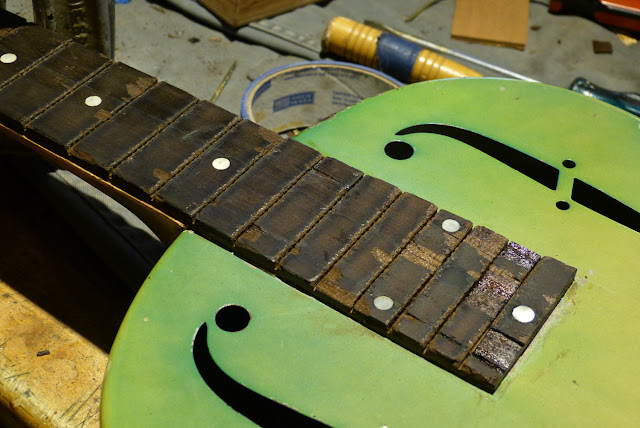Workshop: Dyed Maple Fretboard Woes
I've talked about "cruddy stained-maple" or "evil dyed-maple" fretboards from time to time and this lovely old National is like the poster-child for why I get driven mad by the stuff -- which can be found on just about every American make imaginable at some point in their product lines.
The worst culprits are the 1900s-1940s instruments, however, which seemed to make use of an "ebonizing" agent (to make the board uniformly black) that, as it ages, turns the wood mealy, dries it out like mad, and makes it extremely fragile and prone to awful chipping. Harmony products with maple boards seem to be the worst, but this particular National's board has all of those features as well. The photo above is from directly after I removed the frets and you can see what a mess it's in -- the chip-outs almost instantly disintegrate as they fall out because they're so mealy. This has actually already been filled, leveled, and refretted, though -- I wanted to post to show the ugly side of this repair.
The fact of the matter is that I almost didn't choose to refret this guitar because I knew of the headache involved with this fretboard as soon as I saw the myriad of dryness hairline cracks running through it. I knew there was a problem with the neck adding relief when tuned to pitch, though, and it became clear once I got the binding off -- the board itself was actually unglued in sections and those sections were flexing as tension was added. In addition there was a real "warp" to the neck as well, to the extent which only a refret would solve.
The area from frets 1-7 or so actually had a number of hairlines in it (not obvious until I could get the board lifted a little after the binding was off) and it was complicated to glue all back together and stable.



Comments